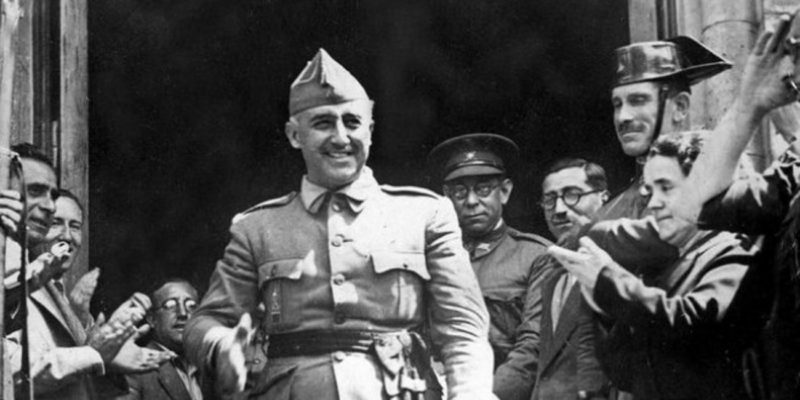We explain what totalitarianism is and what its characteristics are. Also, its differences with authoritarianism and some examples.
What is totalitarianism?
Totalitarianism is a form of state in which a single political party rules with absolute power without any limitations. The concept of totalitarianism defines states, ideologies, groups or movements where freedom is deprived , and through which the State concentrates all powers in a total way without respecting divisions or individual rights .
Totalitarianism is a regime (not a political ideology per se ) in which all powers rest with a single political party. Through different means and strategies, the regime closes or suspends the rest of the political parties .
The figure of a leader or a party president is key in this type of regimes and his opposition represents imprisonment, repression or death.
During the exercise of these governments there is abuse of power, lack of human rights , the rule of media communication and the involvement of the educational system in order to shape and mold the society with various control mechanisms for obey the leader's orders.
-
Characteristics of totalitarianism
 Totalitarianism is characterized by:
Totalitarianism is characterized by:
- The government of a single political party .
- The image of a strong and glorified leader from political propaganda.
- The lack of division or separation of powers of the State, for that reason it is called “totalitarian State”.
- The lack of individual rights, free opinion or intervention in politics for any citizen .
- The lack of free choice of worship and education (practices subject to the current regime).
- The abuse of political propaganda and the mass media, for strategic purposes to exercise control and social repression.
- The censorship of public opinion and of any type of information in the media that does not come from the State.
- The control and management of the economy by the State, which takes over private properties and the Nation's corporations.
- The adoption of political ideals, whether of the left or the right, to exercise the totalitarian regime (it is not an ideology in itself, it is a way of governing under certain ideals).
Examples of totalitarian states

Some examples of totalitarian states throughout history are:
- Nazism . It took place from 1933 in Germany , headed by Adolf Hitler , who was already the head of a Nazi party since 1921. The swastika and terror were the great symbols of the regime that sought to create a "racially pure" state and caused the greatest systematic extermination in history towards different social groups: the holocaustthe Jewish people (who left around 6,000,000 dead) and other victims such as Russians, Poles, Ukrainians, Serbs, Gypsies, French, Belgians, LGBT people (lesbian, gay, bisexual or transgender), mentally or physically disabled, prisoners of war, jehovah's witnesses, Muslims and any other minority (around 11,000,000 dead). Nazism culminated in 1945 with the end of World War II .
- Musollini fascism . It took place from 1922 in Italy (during the period between the wars). It was an anti-parliamentary, undemocratic, nationalist military regime with imperialist tendencies. Benito Musollini became the dictator leader, who exercised violence, closed parliament in 1925, made a pact with the Catholic Church who could deal with education in exchange for accepting the dictatorship of Mussolini and maintained a corporatist economic system ( in the hands of the State). His mandate fell in 1943, leaving 460,000 dead, one million injured and 530,000 prisoners.
- Stalinism . It took place from 1929 in the Soviet Union and was headed by the tyrant Lósif (Joshef) Stalin, who began his exercise by liquidating the "prosperous peasants" in order for the state to control agriculture. Millions of people died of famine and Stalin accused the Ukrainians of the failure of his own policy, sealing the borders with Ukraine and unleashing mass killings. After a bloody repression and enormous sacrifices imposed on the population , Stalin turned Russia into an economic and military power. The USSR was part of the Allies (along with the US, England and France) In the Second World War. Stalin held office until his death in 1953.
-
Difference between authoritarianism and totalitarianism
 Although authoritarianism and totalitarianism seem similar concepts, there are differences. Authoritarianism is a government regime in which a single person or dictator establishes the measures to be taken and decides over the majority (instead of being based on an ideology through a political party).
Although authoritarianism and totalitarianism seem similar concepts, there are differences. Authoritarianism is a government regime in which a single person or dictator establishes the measures to be taken and decides over the majority (instead of being based on an ideology through a political party).For example, the Roman dictatorship (in Ancient Rome until 500 BC), the authoritarian government of Robert Mugabe (1980-2017) in Zimbabwe, the authoritarian government of Fidel Castro (1929-2008) in Cuba, who led the revolution socialist , the dictatorship of Francisco Franco (1939-1959) in Spain and the government of Augusto Pinochet (1973-1990) in Chile .
The above content published at Collaborative Research Group is for informational and educational purposes only and has been developed by referring reliable sources and recommendations from experts. We do not have any contact with official entities nor do we intend to replace the information that they emit.
Cultural journalist with great interest in education and technological innovation in the classroom. The future passes through technology and it is already here. .
Leave a reply
Your email address will not be published. Required fields are marked *Recent post

Sport: What Is It, Types, Risks, Features, Characteristics and Examples

Dogs: Emergence, Features, Characteristics, Feeding and Breeds

Story: Definition, Elements, Structure, Features and Characteristics

